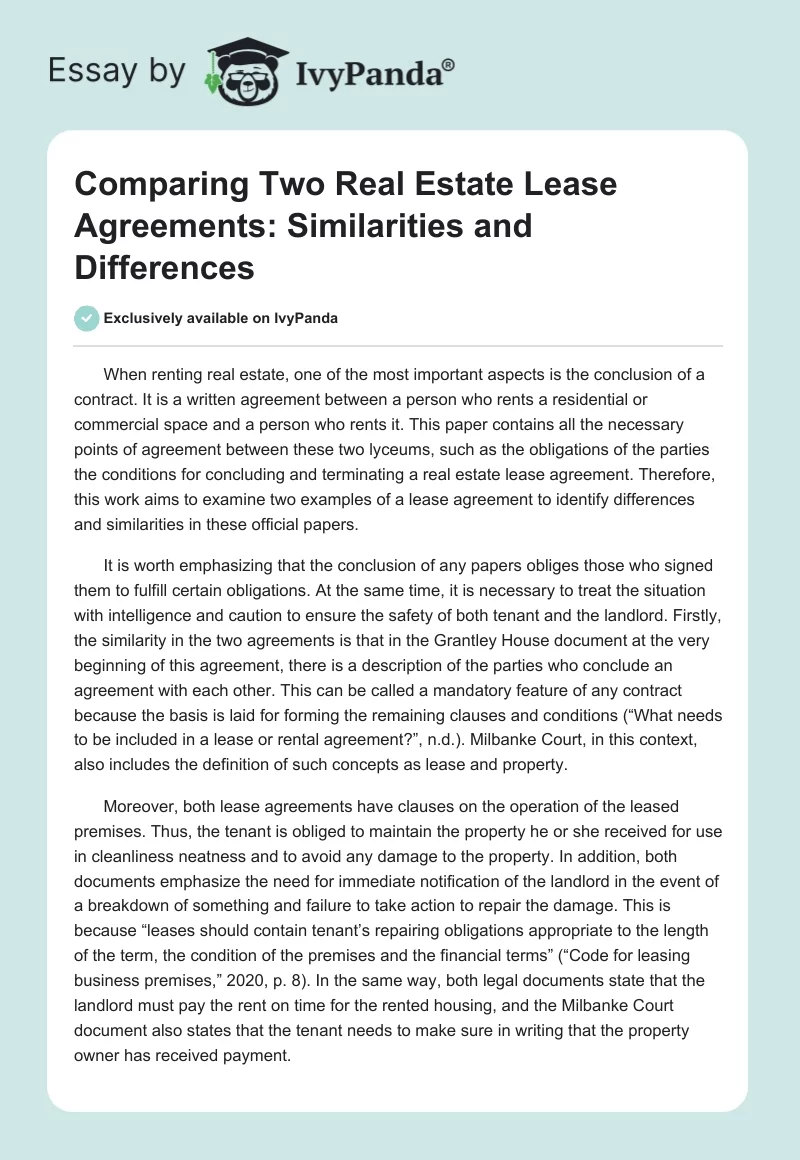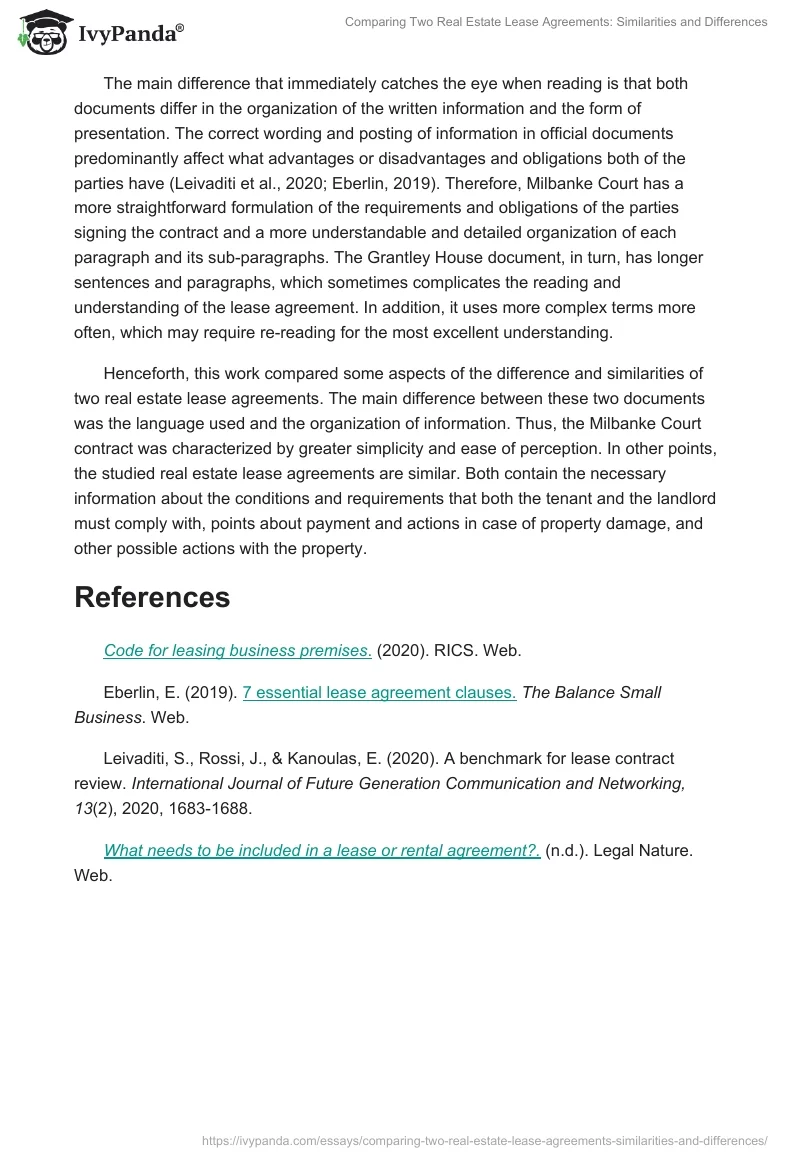When renting real estate, one of the most important aspects is the conclusion of a contract. It is a written agreement between a person who rents a residential or commercial space and a person who rents it. This paper contains all the necessary points of agreement between these two lyceums, such as the obligations of the parties the conditions for concluding and terminating a real estate lease agreement. Therefore, this work aims to examine two examples of a lease agreement to identify differences and similarities in these official papers.
It is worth emphasizing that the conclusion of any papers obliges those who signed them to fulfill certain obligations. At the same time, it is necessary to treat the situation with intelligence and caution to ensure the safety of both tenant and the landlord. Firstly, the similarity in the two agreements is that in the Grantley House document at the very beginning of this agreement, there is a description of the parties who conclude an agreement with each other. This can be called a mandatory feature of any contract because the basis is laid for forming the remaining clauses and conditions (“What needs to be included in a lease or rental agreement?”, n.d.). Milbanke Court, in this context, also includes the definition of such concepts as lease and property.
Moreover, both lease agreements have clauses on the operation of the leased premises. Thus, the tenant is obliged to maintain the property he or she received for use in cleanliness neatness and to avoid any damage to the property. In addition, both documents emphasize the need for immediate notification of the landlord in the event of a breakdown of something and failure to take action to repair the damage. This is because “leases should contain tenant’s repairing obligations appropriate to the length of the term, the condition of the premises and the financial terms” (“Code for leasing business premises,” 2020, p. 8). In the same way, both legal documents state that the landlord must pay the rent on time for the rented housing, and the Milbanke Court document also states that the tenant needs to make sure in writing that the property owner has received payment.
The main difference that immediately catches the eye when reading is that both documents differ in the organization of the written information and the form of presentation. The correct wording and posting of information in official documents predominantly affect what advantages or disadvantages and obligations both of the parties have (Leivaditi et al., 2020; Eberlin, 2019). Therefore, Milbanke Court has a more straightforward formulation of the requirements and obligations of the parties signing the contract and a more understandable and detailed organization of each paragraph and its sub-paragraphs. The Grantley House document, in turn, has longer sentences and paragraphs, which sometimes complicates the reading and understanding of the lease agreement. In addition, it uses more complex terms more often, which may require re-reading for the most excellent understanding.
Henceforth, this work compared some aspects of the difference and similarities of two real estate lease agreements. The main difference between these two documents was the language used and the organization of information. Thus, the Milbanke Court contract was characterized by greater simplicity and ease of perception. In other points, the studied real estate lease agreements are similar. Both contain the necessary information about the conditions and requirements that both the tenant and the landlord must comply with, points about payment and actions in case of property damage, and other possible actions with the property.
References
Code for leasing business premises. (2020). RICS. Web.
Eberlin, E. (2019). 7 essential lease agreement clauses.The Balance Small Business. Web.
Leivaditi, S., Rossi, J., & Kanoulas, E. (2020). A benchmark for lease contract review. International Journal of Future Generation Communication and Networking, 13(2), 2020, 1683-1688.
What needs to be included in a lease or rental agreement?. (n.d.). Legal Nature. Web.


